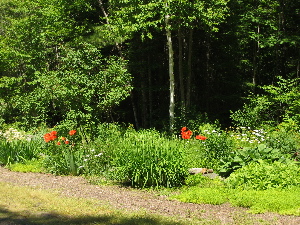Pollinators
Good morning! It appears that research has shown polluted air affects the pollinators in that they cannot smell the plants they are trying to find! This may account for the bee die off, or Colony Collapse Disorder. This is not proven, but seems logical as the bees don't see well. They utilize the odor to find the plants.
You will notice many of these plants are in the category of wild flowers, or naturalized plants. They are very easy to grow since they don't require much care. If you've been reading my recent articles, most of them are good candidates for Xeriscapes and Rain Gardens.
I guess my point is that perhaps we should try to utilize this list of plants as we replace plantings in our gardens.
Vulnerable Plants-Monday, May 5, 2008 Washington Post
Written by Juliet Eilperin
Ozone pollution not only affects pollinators but also directly harms many plants and flowers, according to a recent report.
Vulnerable Plants
Gary M. Lovett of the Cary Institute of Ecosystem Studies and Timothy H. Tear of the Nature Conservancy listed a wide variety of East Coast vegetation that is considered vulnerable to air pollution in a paper titled "Effects of Atmospheric Deposition on Biological Diversity in the Eastern United States."
Tear said the effects of ozone on ecosystems "have been underestimated by society and conservation, as well." The list of vulnerable plants they found on National Park Service or Fish and Wildlife land includes:
· Evening primrose
· Huckleberry
· Loblolly pine
· Jack pine
· Pitch pine
· Table-mountain pine
· Monterey pine
· Jeffrey pine
· Red elderberry
· Blue elderberry
· Yellow poplar
· Tall milkweed
· Mugwort
· Virginia creeper
· Quaking aspen
· American sycamore
· Black cherry
· Choke cherry
· Ponderosa pine
· Thimbleberry
· Cutleaf coneflower
· Sassafras
· Goldenrod
· Speckled alder
· American hazelnut
· Sweet mock
· Spreading dogbane
· Yellow buckeye






0 Comments:
Post a Comment
<< Home